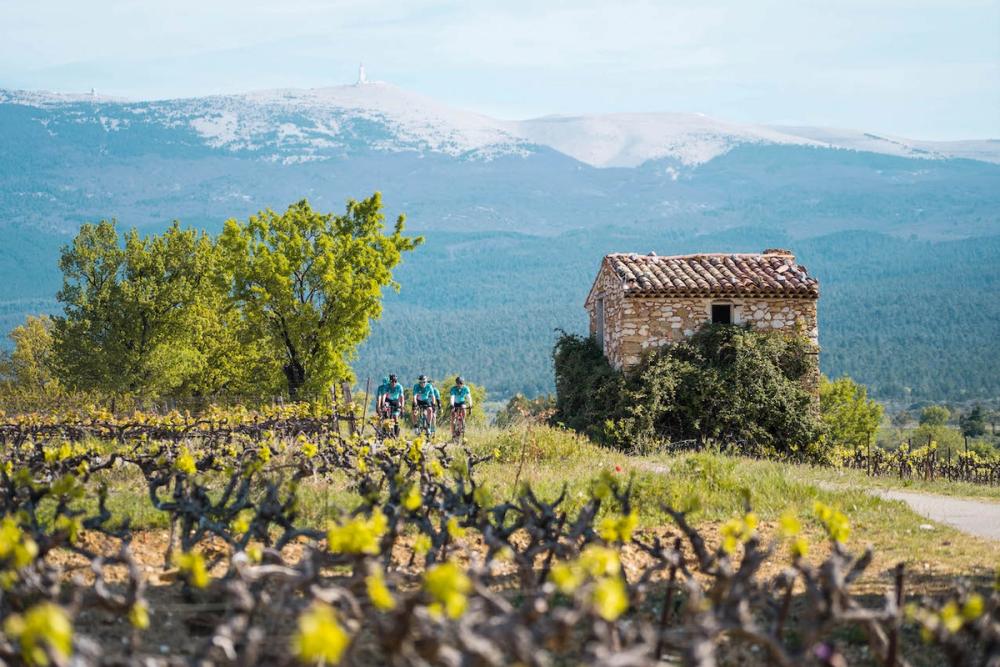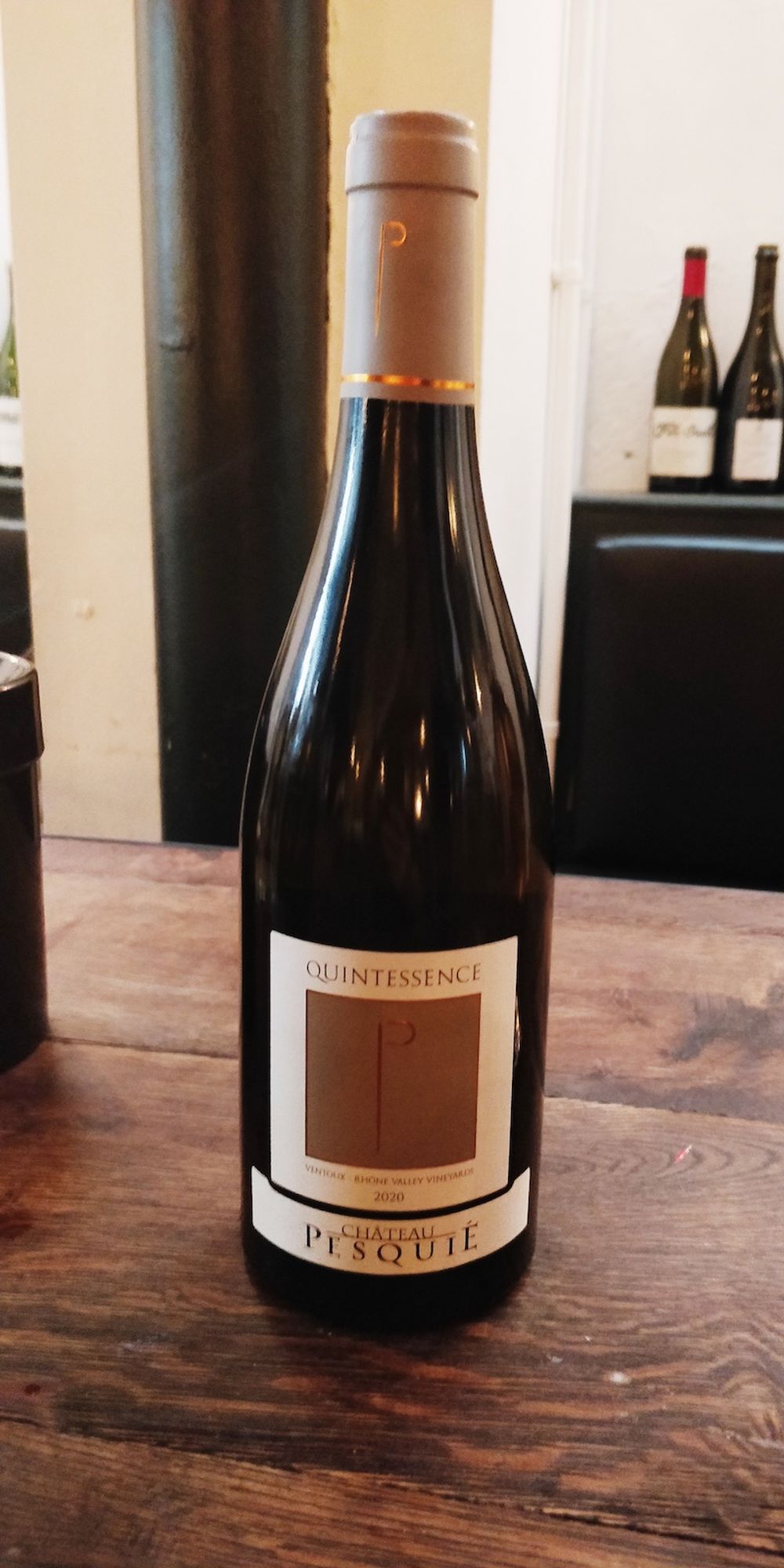“What unites the Ventoux wines for me tends to be an edgy acidity that brings a certain cut and freshness to the wines, across all different colours,” says Matt Walls.

The wines of Ventoux AOC have been transformed in a short space of time
In recent years the Ventoux AOC has been making its presence known to a wider audience. Once seen as the ‘Clark Kent’ of the Southern Rhône, as regional expert Matt Walls wryly observes, it is now blossoming into the superhero of the region.
The Ventoux winemaking community is known locally for its dynamism and ability to adapt. Building on its movement into vin de table, Ventoux is fast being recognised for its quality, value and versatility.
This superhero of the Rhône landed with aplomb at a recent trade and press tasting hosted at Fare restaurant in Old Street, London. Trusted sidekicks Matt Walls and President of the Ventoux AOC, also owner of Chateau Pesquié, Frédéric Chaudiere were on hand to shepherd all comers away from the pitfalls of the past and onward to an exciting future.

Planting higher is definitely an option in Ventoux AOC
Virtue of Ventoux
The Ventoux region is blessed with the qualities of both a warm Mediterranean climate and the cooling influences of the notorious Mistral wind with the added ‘jewel’ being altitude. Situated on the slopes of the famous Mont Ventoux, the 150 producers making up 10% of the total Rhône Valley production, shelter from the harsh temperatures other appellations struggle to manage during extreme climatic events. Warm days, cool nights are now the holy grail for winemakers and Ventoux has this on a regular basis.
Currently vineyards in the Ventoux sit between 150 to 500 metres above sea level. With a peak of 1,912 metres, “planting higher is definitely an option” comments Chaudiere with reference to the warming planet. Continuing, “[we are] working on the way we prune, density of vines, plantings and cover crops,” as both an insurance policy for the future and to achieve better quality now.
The other option available is grape varieties. “Marselan is interesting on a few different levels. Grenache is susceptible to coulure, which can seriously affect yields, whereas Marselan isn’t. Marselan is also quite resistant to rot, so in an unpredictable climate it can offer some certainty,” states Walls. Going on to caveat with “I’m not sure it will ever rival Grenache, Syrah or Mourvèdre for quality, but it can be useful in a blend.”
Red wine is still the dominant force with 54% of production, however white wine is on the rise. “It is fair to say, we may see in 20-30 years reds declining, rosé no change [currently at 38%], and whites rising from 8% now to 20-30%,” Chaudiere explains.
At present Grenache Blanc is the varietal of choice, however, the historically important Clairette is fast becoming the popular pick. Walls highlights this trend: “I believe that Clairette and Roussanne tend to give more expressive wines here. Clairette can be quite mild in acidity, but Ventoux’s characteristic zestiness helps to create a fresh and appealing style.” This was evident in the wines on display with many showing an upright, steely acidity and poised precision.
Chaudiere further emphasises the importance of this grape: “I feel that Clairette is getting more and more focus: from a variety that was usually supporting the freshness in the blend, you now find blends that have a majority of Clairette and showcase its salinity and its crystalline nature.”
Of the whites on show, each had a substantial proportion of Clairette in the blend, yet the Domaine de Fondrèche Blanc 2021 (available from H2vin Ltd.) perhaps showed this quality best with its very aromatic and fresh style. Marked by the addition of 10% Rolle (aka Vermentino) to an equal blend of Grenache Blanc, Roussanne and Clairette, the wine had a mineral quality, crisp citrus and some typical garrigue notes on the back palate.

“We are an appellation of freedom for talented winemakers,” Frédéric Chaudiere. ©Alexandre Frémiot
Versatility of Ventoux
“There are a lot of producers experimenting in the Ventoux. In many ways, we are an appellation of freedom for talented winemakers. Concrete eggs, amphora, spheres, ageing in barrels (or in tanks) over three years… You name it! We are lucky to have a great terroir, we are understanding it more and more and plot by plot,” notes Chaudiere.
He also explains that focus of terrior in Ventoux has attracted the attention of the Institut National des Appellations d’Origine (INAO): “The INAO is going to release in the coming months the results of the work of a commission on the matter. With premiumisation happening, lots of micro-terroirs are emerging and winemakers are slowly capturing their beauty and identity. In that sense, there is a spontaneous dynamic to define, within each winery, higher quality plots and terroirs. We have also opened discussions about how to create a hierarchy and inner delimitations in our AOC but this will take a lot of time.”
Four wines demonstrated this quality level, clearly revealing their complexity, diversity and value.

Firstly, Chaudiere’s own wine Château Pesquié ‘Quintessence’ Blanc 2020 (Flint Wines RRP: £21) blends 80% Roussanne with 20% Clairette. Barrel-fermented separately then aged for eight months in both 600-litre oak barrels and concrete eggs to produce an exceptionally textured, gastronomic and complex wine with notes of rounded white peach, quince, subtle vanilla plus a nutty, creamy butterscotch tone.

Another premium wine employing the use of ovoid vessels is the ‘Il Était Une Fois’ rouge from Domaine de Fondrèche. Comprising 80% of old vine Grenache planted in 1936 & 1938 balanced with youthful Syrah and Mourvēdre. Lifted floral perfume, concentrated black & red hedgerow fruit, an extremely well intergrated 15% alcohol blends well with that trademark fresh acidity (H2vin Ltd. RRP: £30).
Alternatively, ‘La Croix’ rouge 2019 by Château Unang is both velvety and powerful with concentrated medicinal cherries, mint and clove from 12 months in oak and 12 months bottle age prior to release. This organic red is drinking well now but will no doubt improve in time, further highlighting its value at an RRP of £20 (from Hayward Brothers).

Château Pesquié are leading the way with their ‘Silica’ red 2020 using concrete tanks and eggs, limiting extraction and ageing in select barrels and eggs for 12-15 months. This organic 90% Grenache, 10% Cinsault is a rich and rounded elegant blend with complex sweet spice, red cherry and an ethereal floral lift (Flint Wines RRP: £35).
“What unites the wines for me tends to be an edgy acidity that brings a certain cut and freshness to the wines, across all different colours”, Walls believes. This much was clear across all wines featured, further emphasising the sense of place.
Vision of Ventoux
“I believe Ventoux AOC is going to keep on providing incredible value to customers. The Ventoux AOC is definitely showing a wider range of more premium wines which, even at higher price points, offer incomparable value for money,” concludes Chaudiere.
The future vision of Ventoux is one of adventure and excitement. One where altitude is key, micro-climates and experimentation is encouraged and cultural diversity is as organic and healthy as the grapes themselves. It is time to recognise Clark Kent as the true star of the Rhône.































